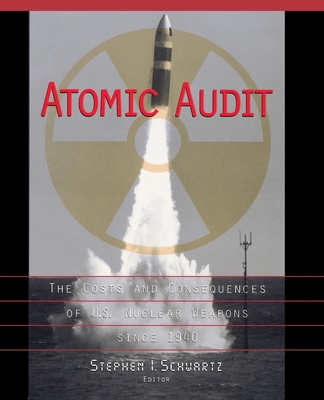Since 1945, the United States has manufactured and deployed more than 70,000 nuclear weapons to deter and if necessary fight a nuclear war. Some observers believe the absence of a third world war confirms that these weapons were a prudent and cost-effective response to the uncertainty and fear surrounding the Soviet Union''s military and political ambitions during the cold war. As early as 1950, nuclear weapons were considered relatively inexpensive— providing ""a bigger bang for a buck""—and were thoroughly integrated into U.S. forces on that basis. Yet this assumption was never validated. Indeed, for more than fifty years scant attention has been paid to the enormous costs of this effort—more than $5 trillion thus far—and its short and long-term consequences for the nation. Based on four years of extensive research, Atomic Audit is the first book to document the comprehensive costs of U.S. nuclear weapons, assembling for the first time anywhere the actual and estimated expenditures for the program since its creation in 1940. The authors provide a unique perspective on U.S. nuclear policy and nuclear weapons, tracking their development from the Manhattan Project of World War II to the present day and assessing each aspect of the program, including research, development, testing, and production; deployment; command, control, communications, and intelligence; and defensive measures. They also examine the costs of dismantling nuclear weapons, the management and disposal of large quantities of toxic and radioactive wastes left over from their production, compensation for persons harmed by nuclear weapons activities, nuclear secrecy, and the economic implications of nuclear deterrence.
Utilizing archival and newly declassified government documents and data, this richly documented book demonstrates how a variety of factors—the open-ended nature of nuclear deterrence, faulty assumptions about the cost-effectiveness of nuclear weapons, regular misrepresentation of and overreaction to the Soviet threat, the desire to maintain nuclear superiority, bureaucratic and often arbitrary decisions, pork barrel politics, and excessive secrecy—all drove the acquisition of an arsenal far larger than what many contemporary civilian and military leaders deemed necessary. Atomic Audit concludes with recommendations for strengthening atomic accountability and fostering greater public understanding of nuclear weapons programs and policies.
 Jacket, Women
Jacket, Women
 Woolend Jacket
Woolend Jacket
 Western denim
Western denim
 Mini Dresss
Mini Dresss
 Jacket, Women
Jacket, Women
 Woolend Jacket
Woolend Jacket
 Western denim
Western denim
 Mini Dresss
Mini Dresss
 Jacket, Women
Jacket, Women
 Woolend Jacket
Woolend Jacket
 Western denim
Western denim
 Mini Dresss
Mini Dresss
 Jacket, Women
Jacket, Women
 Woolend Jacket
Woolend Jacket
 Western denim
Western denim
 Mini Dresss
Mini Dresss
 Jacket, Women
Jacket, Women
 Woolend Jacket
Woolend Jacket
 Western denim
Western denim
 Mini Dresss
Mini Dresss






























































